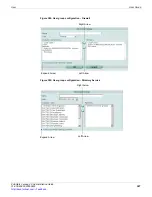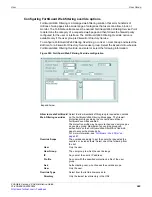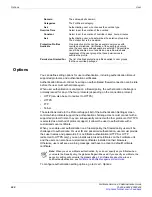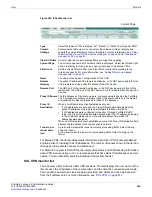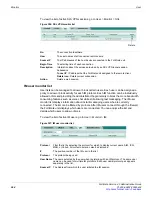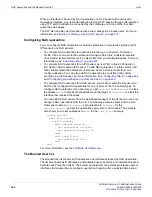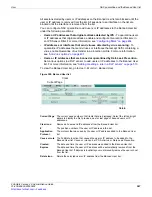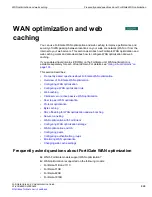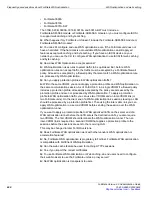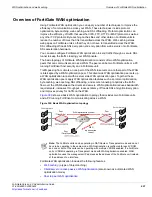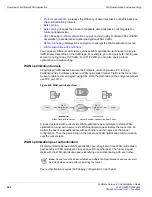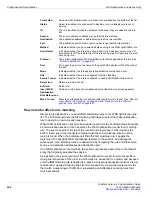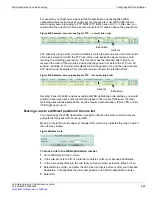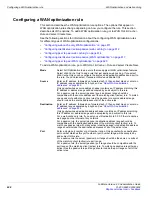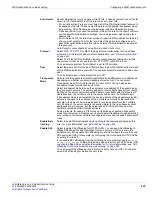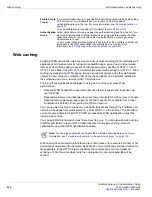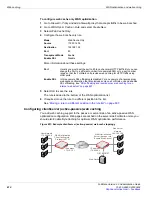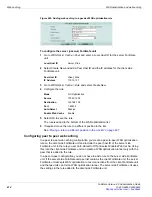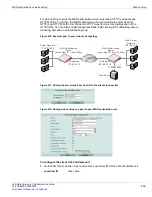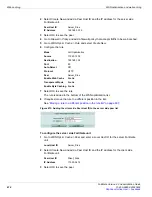
WAN optimization and web caching
Overview of FortiGate WAN optimization
FortiGate Version 4.0 Administration Guide
01-400-89802-20090424
601
Overview of FortiGate WAN optimization
Using FortiGate WAN optimization you can apply a number of techniques to improve the
efficiency of communication across your WAN. These techniques include protocol
optimization, byte caching, web caching, and SSL offloading. Protocol optimization can
improve the efficiency of traffic that uses the CIFS, FTP, HTTP, or MAPI protocol as well as
any other TCP protocol. Byte caching caches files and other data on FortiGate units to
reduce the number of times that it is transmitted across the WAN. Web caching stores
web pages on FortiGate units so that they do not have to transmitted across the WAN.
SSL offloading off loads SSL decryption and encryption from web servers onto FortiGate
SSL acceleration hardware.
You can also configure FortiGate WAN optimization to send traffic through a secure SSL
tunnel to keep the traffic crossing your WAN private.
The basic topology of FortiGate WAN optimization consists of two WAN optimization
peers that can communicate across a WAN. The peers can be two FortiGate units or a PC
running FortiClient host security and a FortiGate unit.
Traffic passing from clients on one part of the WAN to servers on another part of the WAN
is intercepted by a WAN optimization peer. This client side WAN optimization peer sets up
a WAN optimization tunnel with a server side WAN optimization peer. Together these
WAN optimization peers apply WAN optimization features such as protocol optimization,
byte caching, web caching, SSL offloading, and secure tunneling to optimize the traffic
flow over the WAN between the clients and servers. WAN optimization reduces bandwidth
requirements, increases throughput, reduces latency, off loads SSL encryption/decryption
and improves privacy for traffic on the WAN.
shows a basic WAN optimization topology that includes two FortiGate units
and a PC running FortiClient communicating across a WAN.
Figure 399: Basic WAN optimization topology
FortiGate WAN optimization includes the following features.
•
(a type of object caching)
•
Client/server or active passive WAN optimization
(also known as automated WAN
optimization mode)
•
Client Network
Server Network
WAN
WAN optimization tunnel
WAN
optimization
tunnel
Peer
(Server Side)
Peer
(Client Side)
Peer
(FortiClient)
Note:
The FortiGate units can be operating in NAT/Route or Transparent mode and do not
have to be operating in the same mode. WAN optimization is configured for each VDOM
and one or both of the units can be operating with multiple VDOMs enabled. If a FortiGate
unit or VDOM is operating in Transparent mode with WAN optimization enabled, WAN
optimization uses the management IP address as the address of the FortiGate unit instead
of the address of an interface.
Summary of Contents for Gate 60D
Page 705: ...www fortinet com...
Page 706: ...www fortinet com...

